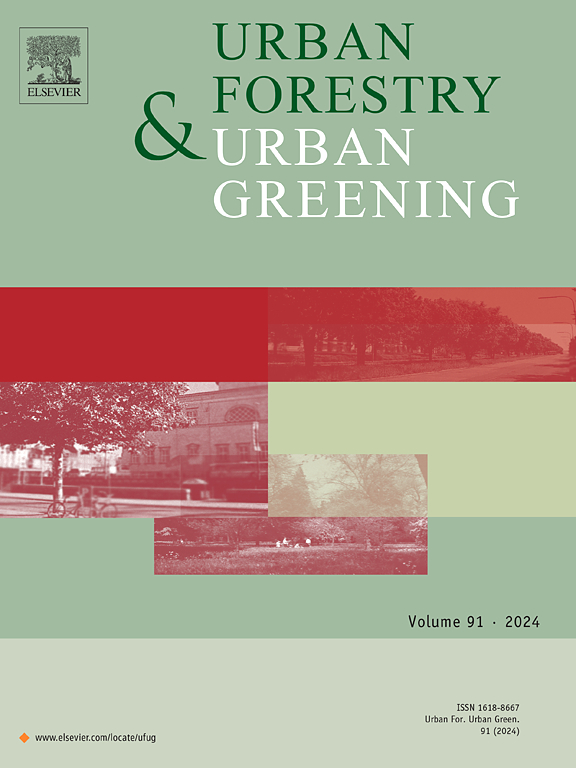Herbicide, not prescribed burning, drives larger shifts in soil fungal communities in a Mediterranean-type urban woodland
IF 6
2区 环境科学与生态学
Q1 ENVIRONMENTAL STUDIES
引用次数: 0
Abstract
Invasive species management is increasingly important for conservation of native ecosystems, particularly for urban reserves, given their high value, visibility and disturbance. Often control methods for invasive weed species do not consider lesser-known facets of ecosystems, such as the soil fungal community. We collected soil samples from areas treated with prescribed burns, herbicide application, and combined prescribed burn and herbicide in two Mediterranean climate-type, urban woodlands in southwestern Australia, and subjected the extracted DNA to high throughput sequencing to describe the fungal communities present. We found that the soil fungal community in the two sites responded similarly and was broadly resistant to the management applications. However, herbicide application was associated with a reduction in relative abundances of some phyla and families, as well as key functional groups, compared to non-treated controls. Fire appeared to offset the negative effects of herbicide application, indicating complex interactions with the soil fungal community. Herbicide application in combination with fire is critical for grassy weed management and promoting native plant species regeneration in this system. Our results highlight the need to further examine herbicide effects on soil fungi and further research is needed to quantify effect duration for all treatments.
除草剂,而不是规定的燃烧,驱动土壤真菌群落在地中海型城市林地更大的变化
外来入侵物种具有很高的价值、可见度和干扰性,因此管理外来入侵物种对保护本地生态系统,特别是城市自然保护区越来越重要。通常控制入侵杂草物种的方法不考虑生态系统中鲜为人知的方面,如土壤真菌群落。在澳大利亚西南部两个地中海气候型的城市林地中,我们收集了经过处方烧伤、除草剂施用以及处方烧伤和除草剂联合处理的土壤样本,并对提取的DNA进行高通量测序,以描述存在的真菌群落。研究发现,两个地点的土壤真菌群落对管理应用的反应相似,并且对管理应用具有广泛的抗性。然而,与未施用除草剂的对照相比,施用除草剂与某些门和科以及关键官能团的相对丰度降低有关。火灾似乎抵消了除草剂施用的负面影响,表明与土壤真菌群落的复杂相互作用。在该系统中,火配除草剂对杂草管理和促进本地植物物种更新至关重要。我们的研究结果表明,需要进一步研究除草剂对土壤真菌的影响,并需要进一步的研究来量化所有处理的影响持续时间。
本文章由计算机程序翻译,如有差异,请以英文原文为准。
求助全文
约1分钟内获得全文
求助全文
来源期刊

Urban Forestry & Urban Greening
FORESTRY-
CiteScore
11.70
自引率
12.50%
发文量
289
审稿时长
70 days
期刊介绍:
Urban Forestry and Urban Greening is a refereed, international journal aimed at presenting high-quality research with urban and peri-urban woody and non-woody vegetation and its use, planning, design, establishment and management as its main topics. Urban Forestry and Urban Greening concentrates on all tree-dominated (as joint together in the urban forest) as well as other green resources in and around urban areas, such as woodlands, public and private urban parks and gardens, urban nature areas, street tree and square plantations, botanical gardens and cemeteries.
The journal welcomes basic and applied research papers, as well as review papers and short communications. Contributions should focus on one or more of the following aspects:
-Form and functions of urban forests and other vegetation, including aspects of urban ecology.
-Policy-making, planning and design related to urban forests and other vegetation.
-Selection and establishment of tree resources and other vegetation for urban environments.
-Management of urban forests and other vegetation.
Original contributions of a high academic standard are invited from a wide range of disciplines and fields, including forestry, biology, horticulture, arboriculture, landscape ecology, pathology, soil science, hydrology, landscape architecture, landscape planning, urban planning and design, economics, sociology, environmental psychology, public health, and education.
 求助内容:
求助内容: 应助结果提醒方式:
应助结果提醒方式:


